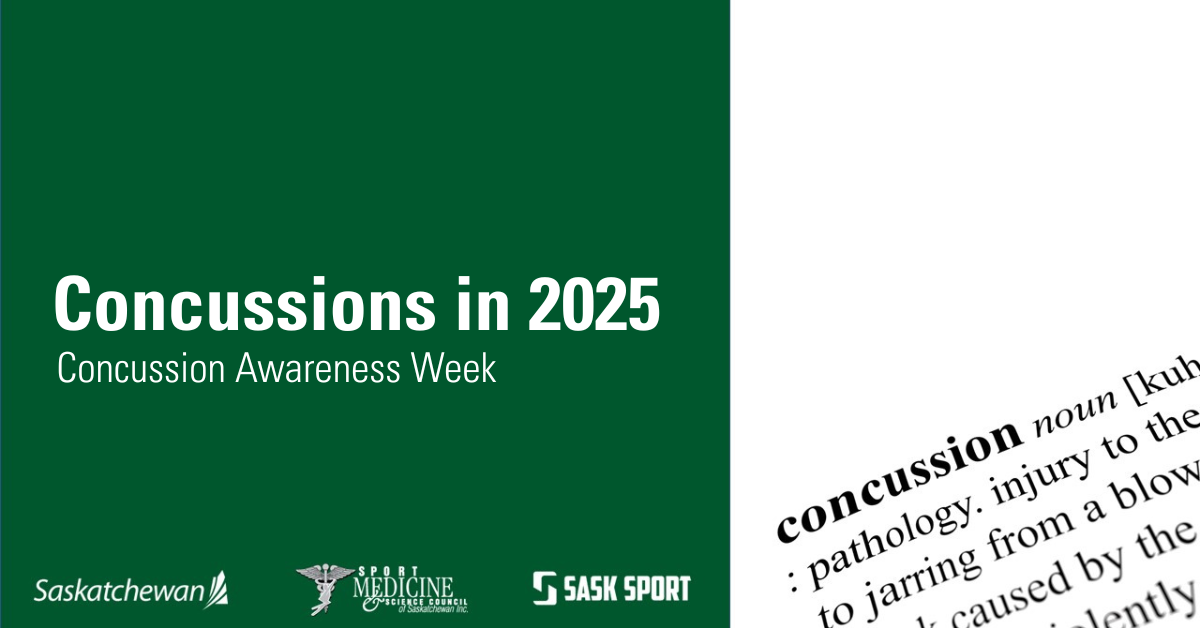On Sept. 25, in recognition of Concussion Awareness Week, Sask Sport, the Sport Medicine & Science Council of Saskatchewan and the Government of Saskatchewan partnered to offer a one-hour webinar: Concussions in 2025.
The webinar featured physiotherapist Kelsi Hilderman (SPC-CERT, MPT, BSc (Kin), CSCS) and her experiences with concussions in sport. Hilderman discussed causes of concussions, prevention strategies, recognizing concussions, how to apply an Emergency & Concussion Action Plan and more.
Over the hour, time was taken to examine concussion management and its evolving landscape, providing valuable knowledge for athletes, coaches, parents and more.
Here are five take aways to consider when dealing with concussions:
Common Concussion Myths
Most concussions do not result in loss of consciousness. Only about 5-10 per cent of individuals who are concussed will lose consciousness.
Forces applied to the body can transmit up to the head and cause a concussion. The neck acts as a channel for force, when energy is absorbed by the body, it can be transmitted to the brain.
Various Symptoms
Physical Symptoms:
- Headache
- Dizziness
- Nausea/Vomiting
Balance Problems
- Sensitivity to light/noise
- Visual Changes
Emotional Symptoms:
- Irritability
- Sadness
- Anxiety
- Fatigue
Cognitive Symptoms:
- Feeling slowed down / foggy
- Difficulty Concentrating
- Confusion
- Memory Problems
- Sleep Problems
- Trouble falling asleep or staying asleep
- Sleeping more than usual
- Drowsiness
Utilize the Concussion Recognition tools
The CRT 6 – Concussion Recognition Tool to help identify concussions in Children, Adolescents & Adults through a two-page document. It is meant to be used by non-medical professionals and is accessible to a variety of audiences. Coaches and activity leaders should keep the CRT6 on their clipboard or in another place for quick and easy reference.
The SCAT6 is an assessment tool to be used by professionals to help identify concussions in adolescents (13 years+) and adults.
Concussion Red Flags
If ANY of the following signs are observed or complaints are reported after an impact to the head or body, the athlete should be immediately removed from play/game/activity and transported for urgent medical care by a healthcare professional.
- Neck pain or tenderness
- Seizure, ‘fits’ or convulsion
- Loss of vision or double vision
- Loss of consciousness
- Increased confusion or deteriorating conscious state (becoming less responsive, drowsy)
- Weakness or numbness/tingling in more than one arm or leg
- Repeated vomiting
- Severe or increasing headache
- Increasingly restless, agitated or combative
- Visible deformity of the skull
When to return to school and sport
Athletes can have challenges in many aspects of their lives when they get a concussion, including in school as well as sport. The Return to School and Return to Sport strategies are designed to provide steps that will help guide athletes in their return to activities.
Other concussion resources:
